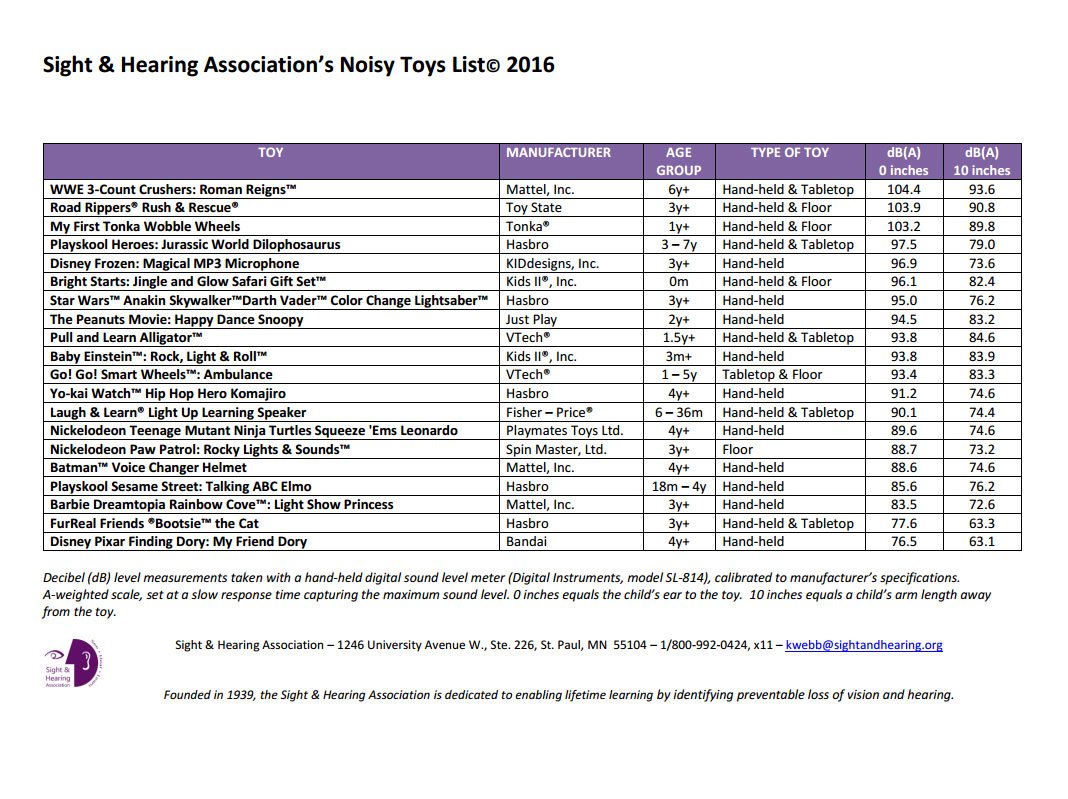 The holiday season is finally over and your children have been playing with their new toys nonstop since Christmas. You may have noticed in that period, that your children’s toys are actually quite loud. What you might not have thought about, though, is exactly how loud they are. The truth is, the toys you and your loved ones bought for your children may actually be loud enough to damage their hearing.
The holiday season is finally over and your children have been playing with their new toys nonstop since Christmas. You may have noticed in that period, that your children’s toys are actually quite loud. What you might not have thought about, though, is exactly how loud they are. The truth is, the toys you and your loved ones bought for your children may actually be loud enough to damage their hearing.
Noise induced hearing loss is caused by exposure to loud sound or excessive noise over time. High intensity noise damages the delicate outer hair cells in the cochlea, which causes sound to be muffled and speech to be distorted. Risk for noise induced hearing loss starts at 85 dB (see chart below), however, sounds that are 120 dB or greater can cause immediate damage. Some children’s toys can be around 90 dB, which is the same level as a chainsaw or lawn mower. If the child moves the toy to his/ her ear, the intensity of the sound increases, putting them more at risk for hearing loss.
Sound producing toys are regulated by the American Society of Testing and Materials (ASTM). ATSM states that toys should not exceed 85 dB at 50 cm, which is about the length of an adult’s arm. According to ATSM, 25 cm is closer to a child’s distance from a toy.
Every November the Sight and Hearing Association releases a list of the noisiest toys. This year, the loudest toy is the WWE 3-Count Crushers, Roman Reigns action figure (Mattel®). The wrestling toy’s highest recorded intensity was 104.4 dB, which is loud enough to cause hearing loss after 15 minutes of playtime. The full list of 2016’s loudest toys as determined by the Sight and Hearing Association can be found at the end of this post.
A few tips:
If the toy sounds loud to you, it will be even louder to your child. Children’s ear canals are smaller than adults, which will increase the
intensity of the sound. In short, if the toy sounds loud to you in the store, it’s too loud for your child.
You can download a sound level meter app on your phone that will give you a close estimate of how loud a toy is. If the toy meets or exceeds 85 dB around 25 cm away from the microphone, consider choosing a quieter toy.
If your child already has loud toy, a layer of duct tape can be placed over the microphone to muffle the sound.

For more information, please visit these resources:
American Speech Language Hearing Association (asha.org)
American Academy of Audiology (http://www.audiology.org)
Sight and Hearing Association (http://www.sightandhearing.org)
Dangerous Decibels (http://dangerousdecibels.org)
